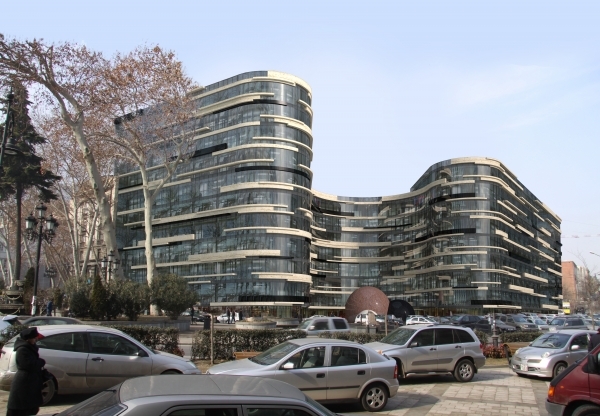Panorama Tbilisi- Is the Capital Facing New Transport Problems?
TBILISI - One of the challenges of modern cities is the issue relating to urban mobility.
Tbilisi is no exception and the rational organizing of transport traffic, as well as other socio-economic, environmental and cultural heritage of urban life is the main concern.
This is the outcome of a land-use policy which, for decades has allowed the development of the city center without any regularity, and without regulation.
The old part of Tbilisi is designed based on the number of vehicles, which is currently consolidates.
"Panorama Tbilisi" project has facilities in the historic center of the city that they feel will lead to an even more significant growth of traffic, because this project is set up in the form of economic attraction /gravity/ of one greater center.
As a rule in large cities the business-centers and conference halls are to build far from the center that except business gives functional and social purposes to new territories.
Tbilisi, especially in the central parts of the city, public transport and a way of solving problems related transport represent business activities focusing on the development of a multi-polar system.
In order to achieve this, transport policy and urban development of the new strategy should work to create several large transports, trade, administrative and business centers in remote places from the center of the city. There are some good precedents of the above mentioned cases in the city.
Tbilisi Mall, East Point, trade-economic, administrative and moving Higher Education Centers, in order to make these places come alive, the local population have been employed. In the terms of the absence of a city development plan, just the central parts of the city is progressing mainly, though fortunately the policy making in a city de-centralization is in the drafting process.
The most acute problem in this way could be Freedom and Erekle square and its surrounding territory. The idea of restoring two-way traffic (Bilateral movement) on Pushkini Street was likely decided due to this circumstances which in itself will overload this section of the city more than it was before..
In 2010 according to French company “Systra” in the early rush hour from 8-a.m.-to 10 a.m. and in the evening rush-hour from 6-p.m. to 8 p.m. the road within that hour was averaging by 2 500 cars. In the terms of new facilities the intensity has increased minimum by 1500 cars.
The most problem places in Tbilisi are-Hero square, Avlabari square, Freedom square, Kazbegi avenue and Pekini street section and the “Tiger and Knight” surrounding area. Additionally, to the freedom square the traffic overload indicator is high.
One of the problem sections will be Tsvkisi-Kojori place where the traffic is doubled when most parts of Tbilisi population flees out of heat of the city.
The various facilities at the hotel will be placed on Freedom square, Erekle Street and old Tbilisi. That means the existing traffic on Freedom square will add to the traffic of the people that already use the route. That is why it is essential to create additional parking close to these territories, which should be put into the project.
To project authors state its additional advantages are the development of the modern Parking space infrastructure. Additionally, 1,800 underground parking space will be arranged in the center of the city and the surrounding areas, as the 800 parking space on Freedom and Erekle square do not meet the curent parking requirement.
Around 400 000 cars are registered in Tbilisi nowadays and there are just 10 % parking space in the city for these cars. In the old parts of Tbilisi, with narrow streets it is becoming a big problem to park a car. It should be considered that in modern cities’ historic center it is not reasonable to create a large parking area. It is much better to create new places for surface parking and to introduce Park and Ride system in different parts of the city, in order to restrict the flow of private vehicles in this direction.
Nowadays 400 000 people live on the right bank of the river Mtkvari, but more than twice that on the left bank. Though traffic jams, air pollutions and parking problems mostly gathering in Saburtalo, Vake, Vera and Sololaki parts.
The new connecting streets construction and possible repairing works of Krtsanisi road will remove the Tsavkisi-Kojori traffic load. This is a potential that Tbilisi City Hall should fulfill, but no one knows when. Cutting new streets does not reduce transport traffic flow in itself.
Unfortunately there are a lot of examples of it in Tbilisi. The city needs to develop, though not due to central parts of the city having traffic issues. All projects especially large one should firstly be orientated on the mobility of a citizen and well-planned transport traffic.
Unlike nowadays, Tbilisi in the Future should turn into an attractive, safe and comfortable city.
Author: Gela Kvashilava
Though there are a lot of risks and drivers have to do some of the risky maneuver that is more dangerous for a right-hand drive car.Gela Kvashilava is the founder the Partnership for Road Safety fund (http://safedrive.ge), advisory council member and regional consultant of the British organization Eastern Alliance for Safe and Sustainable Transport (www.easst.co.uk), expert at the EU TRACECA road safety project.












